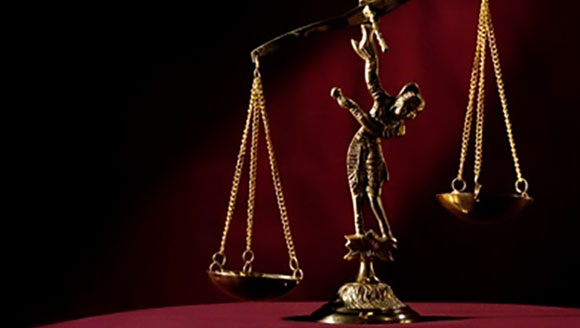The Minority Vote as a Majority Factor in the 2016 Election
 BY DR. SILAS LEE
BY DR. SILAS LEE
POLLSTER, TRIAL CONSULTANT AND SOCIOLOGIST
Elections are more than the political personalities seeking support from voters. They represent democracy’s canvas, which outlines the ideals, ideologies and priorities of this nation. Every four years a president is sworn in as the chief executive and commander-in-chief of this nation to foster a more perfect union in accordance with the ideals of this nation. What actually transpires is the equivalent of a marriage of sorts between voters and the president, whereby the president pledges to protect this country and its citizens from internal and external harm, and citizens promise to honor their responsibilities of citizenship.
For African-American voters, the 2016 presidential election is more than the projection of a four or eight-year agenda. It provides an important opportunity to reassess our position in the political ecosystem. I realize that in today’s instant information society, events are analyzed from a one-dimensional perspective, rather than a multi-dimensional interpretation incorporating the intersection of historical policies on contemporary events. As a pollster and sociologist, I believe we must recognize that if we are going to strategically plan for the future, we must think about building our community infrastructures, coalitions and accountability.
Democracy reflects the complex, over-arching dynamics of the world in which we live. It is a multi-demographic, multi-modal organism that is often unpredictable, yet society retains its historical anchor that continues to fertilize the culture of its political, social and economic institutions. Thus, this election cycle cannot be reduced to vacuous slogans or themes, which can become the propellant for social conflict.
A quick review of the platforms by some of the presidential candidates exposes a conscious practice of intellectual perjury, replacing consequential thinking, which incorporates the intersecting role of history with contemporary events. When analyzing the 2016 election and the impact and significance of the vote of people of color, I hear the words of Lucille Clifton’s poem, We Know This Place, where she states, “Today contains the traces of the past and the seeds of tomorrow. Tomorrow is vision or illusion. We must choose vision.” If we are to choose a clear, ethical and realistic vision, we must reflect on the implications from past practices.
More than 240 years ago, a document known as the Declaration of Independence was signed, and it profoundly states, “We hold these truths to be self-evident, that all men are created equal, that they are endowed by their Creator with certain unalienable Rights, that among these are Life, Liberty and the pursuit of Happiness.” However, a cursory review of American history reveals that our philosophy of equality has not always matched our practices – resulting in a progress-regress sequence of events, whereby those who oppose justice and equality have created legal and legislative obstacles to curtail the fulfillment of those truths written in the Declaration of Independence. Witness the fabricated stories about voter fraud after the election of President Obama to justify implementing voter suppression laws and the evolution of the birther movement that questioned the birthplace of President Obama.
Consistent with this nation’s inability to fulfill the ideals in the Declaration of Independence and the Constitution, many attempt to disassociate the priorities of the African American community as incompatible with the spirit of democracy. This year’s election is about what many voters see when they look in the mirror. They see a reflection of this nation’s inconsistent practices and neglected promises.
Therefore, I am not surprised that we have gone from former governor of Alabama George Wallace’s booming support for segregation to the full-throttle opening of the bigot spigot by Donald Trump. Given voter suppression measures and the recent attempt to repeal the standard tradition of one person-one vote, which was upheld by the U.S. Supreme Court, we are constantly reminded of the importance of protecting our inalienable rights.
Eight years after the election of President Barack Obama, who captivated the nation with his rallying cry of “Yes We Can,” we now have some candidates who act as political vultures and delight in extolling a “No, We Won’t” mantra as they exploit and manipulate those living unconsciously by fear, insecurity and misinformation. When citizens look in the mirror and see their quality of life deteriorating, police brutality in their communities, voter suppression, opposition to equal pay for women, the venom of racism and anti-LGBT legislation, they do not see an inclusive America, but a country blind to their existence and needs.
If demographics represent the future of America, the potential of a majority-minority electorate will transform the political and social landscape. By 2020, the white population will decrease to 60 percent, and Pew Research Center predicts that by 2040, the population of the United States will be majority-minority. This year’s emerging political demographics represent a prelude to the new majority-minority electorate and their impact on social and political policies. While Democratic and Republican strategists argue if this election symbolizes a desire for change or a continued march to progressive policies, these changing demographics suggest that labeling states as red or blue will not accurately describe the political values and issue priorities of voters.
These racially diverse states represent the new swing states. They share irreversible demographic trends, not beholden exclusively to one political party and share the following characteristics:
A. Growth in the minority population from majority white to increasing African American, Latino and Asian America voters in states such as Florida, Nevada, Virginia and Colorado.
B. An aging baby boomer population (voters born between 1946 -1964) in Pennsylvania, Ohio, and New Hampshire where diversity has not been as accelerated and older voters tend to be political moderates.
C. States to watch in the next 10 years that can become swing states are Texas and Georgia. The percentage of eligible white voters in Texas has declined from 75 percent in 1980 to 54 percent in 2012. Similarly, Georgia will continue to experience a decline in white voters from 75 percent in 1980 to 60 percent% in 2012. The States of Change model predicts that the percentage of white votes in the state will drop from 59% in 2016 and to 57% in 2020.
If the presidential election is the Super Bowl of politics, minority voters will be the most valuable players in the 2016 campaign and beyond, as several demographers have observed. These states will be politically competitive and force the political parties to offer less ideologically extreme candidates and reprioritize policies from cultural issues, to quality of life topics such as increasing the minimum wage, equal pay for women, immigration, educational equity and monitoring police misconduct.
The significance of the minority vote is that its relevance extends beyond defending and defining issues impacting people of color, but helping America fulfill its mission of equality, opportunity and justice regardless of race, religion, or gender. America cannot live with the burdens of injustice, or continue to suffer the consequences from such neglect.


 Equality Index
Equality Index  Senate Report
Senate Report  2020 SOBA Essays
2020 SOBA Essays  2019 Report
2019 Report 